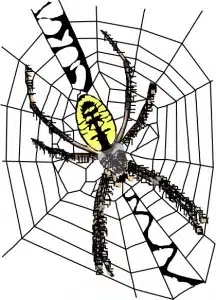- Invisible Walls Game

“He would use the bureaucracy. He would tie things up in bureaucracy. He knew how to make moves and grab what he wanted and then tie it up so you couldn’t get it back. He would use the system…He would mislead people into thinking that he was being cooperative while he was doing this other stuff behind the scenes. He always put on the face of a very cooperative person, but he was a back stabber.”
The Invisible Walls Game is a broad catch-all bucket of highly creative yet secret (well…deniable) ways to stop the progress of an idea while pretending to support that idea in public. One subject reported that a game player agreed to share information and then buried the needed information within a mountain of data and printouts.
“[They] completely disallowed any useful information to come out for me to take back and use as a program. The people in that meeting , therefore, accomplished not allowing the program to be started.”
Of course, not all walls are inherently bad. Good fences make good neighbors. A “wall” is not a game until a group decides they no longer need/want to be a good neighbor.
One Big T Truth about being human is that, to survive, we must balance the paradoxical benefits of connections and protections. Too much emphasis on protection erodes connections. Too few connections and we cannot solve problems that require collaborative effort. Every decision to protect has the potential to erode a connection and vice versa.
Twenty years later, the word “bureaucracy” in the quote above can also describe new technology-run administration systems (new forms of bureaucracy) with built in walls that prevent unauthorized acts of connection/generosity before they can happen. For instance in healthcare, systems increasingly redefine face-to-face interactions as unnecessary and thus avoidable expenses. Kiosk check ins, website based communication and automated telephone systems effectively wall off any chance the providers I need will have to waste time on a healing smile, a shared joke, or an expression of empathetic connection. Some territorial game players are even proud of how these walls keep resources out of the reach of anyone outside their circle of moral concern.
Everyone knows that some walls are good, even vital, but the territorial game of Invisible Walls (not so invisible lately) specifically describes behaviors of a core group that hoards resources needed for collective actions. If it’s not a game (legit protection) it isn’t an invisible wall.
In the 3rded. of The Story Factor (Fall 2019) there will be more about how individuals, groups and institutions use stories to define who is and is not within their “circle of moral concern.” Shrinking circles mean fewer connections. And when the desire to protect causes us to neglect the care and feeding of vital connections required to solve problems too big for our tribe alone– we are playing games with our future.


3 thoughts on “Ten Games People Play to Control Truth (7)”
I discovered you when I had an uninformed concept of storytelling. I had been complaining about a fellow preacher using too much story. I expected him to use a connected narrative. I have been learning from you since then. H just wouldn’t get behind the walls I thought were wise – instead of learning. Interesting ly, there are walls being thrown up right now over border security. Wall is walled up behind dueling definition. My debate teacher always said whoever controls the definitions controls the discussion. He preached securing shared definitions when establishing the proposition. “The scriptures teach ________., and by ______ I mean…” . He also detested over use of elipsis and commas, Oxford or otherwise.
My logo here is/are elk with horns locked together. I am establishing a new congregation in an unincorporated area known as Buckhorn, but attached to Waynesville, MO.
The issue here seems to rest on intent. Walls are inert and have no intent. People put up and use wall with some purpose or intent. In the game described, the intent seeems to be to appear supportive without having to be supportive. The intent is to deceive. I’m not quite sure how to resolve that one, but I am reminded of the line from the old movie “War Games” involving a hypothetical nuclear war. The computer responds to an input by the protagonist with the response, “Silly game, the only winning move is not to play.” The optimist in me insists that short of going nuclear on the wall builder, there must be a means of influence that eliminates the wall or gets the builder to put in a door. But, that is a skill I have little positive experience with.